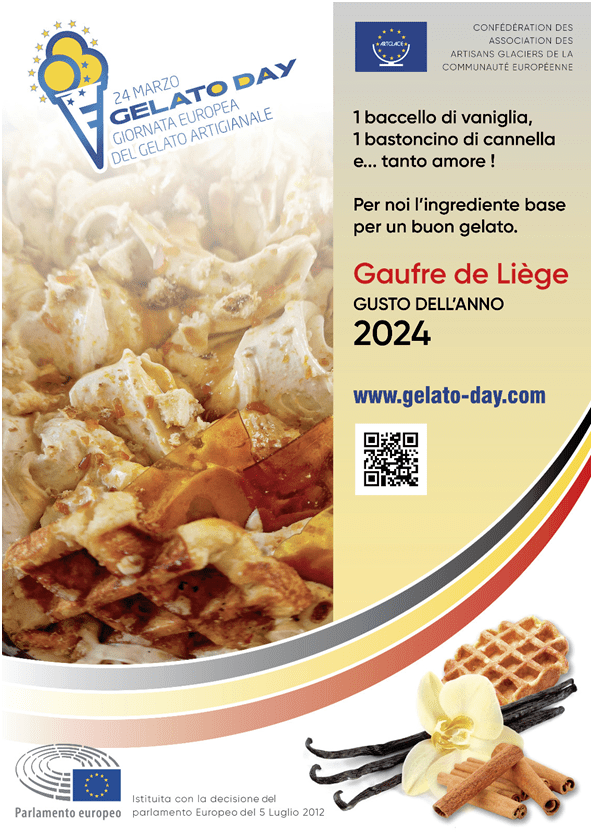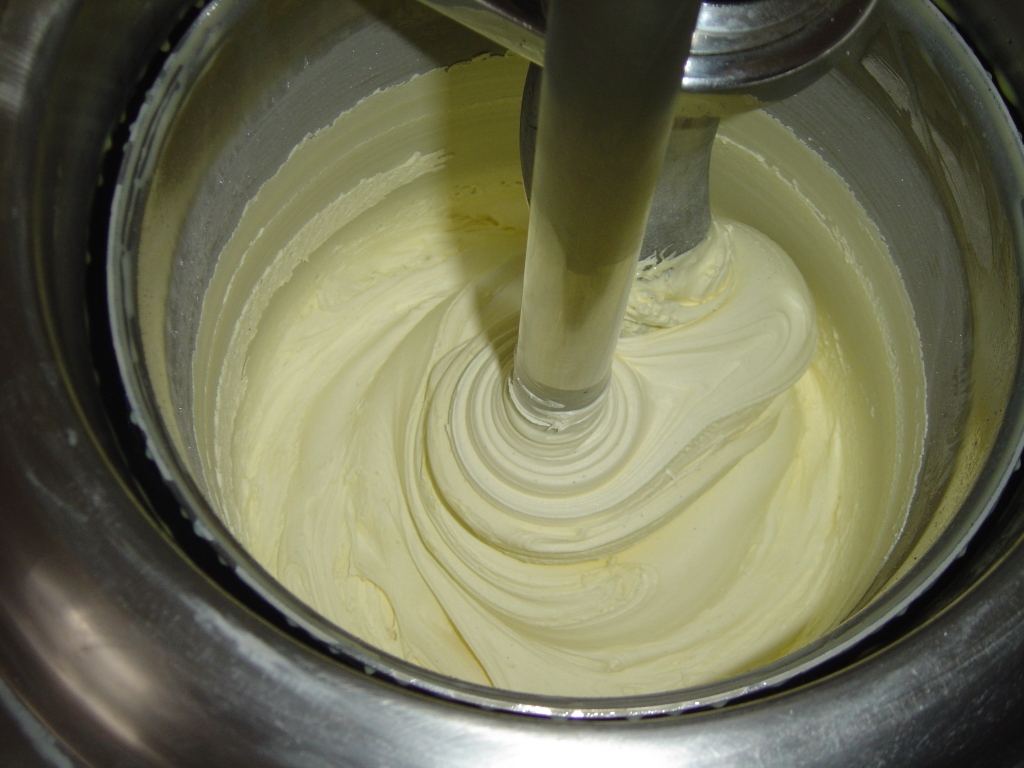
Oggi 24 marzo 2024 è la dodicesima Giornata Europea del Gelato Artigianale, la festa di tutti i gelatieri. Infatti, il 5 luglio 2012, il Parlamento Europeo delibera la creazione della “Giornata Europea del Gelato Artigianale” ponendo l’accento sul valore del gelato artigianale come “….eccellenza in termini di qualità e sicurezza alimentare, che valorizza i prodotti agro-alimentari di ogni singolo stato membro”.
Rileggere oggi queste motivazioni suscita emozione per la lungimiranza dimostrata dai fondatori che non hanno voluto ridurre a se, al proprio territorio, la maestria e la pregevolezza di un prodotto unico, ma, hanno fortemente voluto “democratizzare” il gelato artigianale: ogni Paese, ogni territorio, ha il diritto e il dovere di contribuire alla crescita di questo prodotto, secondo le proprie eccellenze agro-alimentari, il contrario del concetto di Populismo, ultimamente in voga una po’ ovunque.
Il gelato artigianale unisce, non divide e lo dimostra la Giornata Europea, non Sagra in un paesino ma momenti d’incontro in tutta Europa.
Quest’anno l’Organizzazione non ha fornito una ricetta specifica ma ha lasciato ai gelatieri ampia creatività, con il vincolo di alcuni ingredienti e/o aromi legato alla scelta dell’anno: Gaufre de Liège. La caratteristica di questo storico dolce belga, conosciuto in tutto il mondo sotto la denominazione Waffle (leggermente diverso nella ricettazione ma molto simile) è la leggerezza e l’utilizzo dello zucchero perlato, da non confondersi con lo zucchero in granella. Lo zucchero perlato è sottoposto a un processo di produzione aggiuntivo rispetto a quello semolato (da barbabietola), conservandone lo stesso potere nutrizionale, dolcificante e anticongelante. Lo zucchero subisce un’umidificazione con conseguente pressione a freddo per conseguire un’agglomerazione. La pasta ottenuta è fatta essiccare per un tempo ragionevolmente lungo, quindi si passa alla macinatura per ottenere le cosiddette perle che sono pulite dalla polvere residua e selezionate per una dimensione media di 0,10 mm.
Quali sono le caratteristiche dello zucchero perlato? La sua leggerezza innanzitutto, e la rinomata resistenza alla cottura che ritarda notevolmente la caramellizzazione, lasciando il prodotto croccante senza indurire eccessivamente.
Per fare un gelato al Gaufre de Liège, è stata data ampia libertà ai gelatieri e approfitto per offrire una mia versione che mette insieme tutti gli aromi (vaniglia e cannella) e gli ingredienti della guarnitura (burro salato) nella ricetta base, e inserendo il (la) Gaufre in estrazione e/o vaschetta. Il procedimento è il solito per creme: pastorizzazione, maturazione e mantecazione, avendo cura, considerando il tipo d’ingredienti utilizzati nella ricetta, di procedere per gradi e valutare soggettivamente quando il gelato è giunto alla cremosità desiderata per aggiungere in estrazione i pezzi di Gaufre frantumati grossolanamente. La temperatura di conservazione in vaschetta è intorno a -12°C/-14°C, mentre l’Overrun è circa il 25%.
Tab. 1 Schema ricetta: Gelato al Gaufre de Liège
| N° | Ingredienti | Peso (gr) |
| 1 | Latte intero | 640 |
| 2 | Saccarosio | 200 |
| 3 | Sciroppo di glucosio 42DE | 15 |
| 4 | Sali minerali | 2 |
| 5 | Additivo neutro | 5 |
| 6 | Latte magro in polvere | 23 |
| 7 | Burro | 100 |
| 8 | Vaniglia e Cannella | q.b. |
| 9 | Gaufre | 100* |
| Totale | 1.000 |
Nota*: il peso del Gaufre non è conteggiato nel peso totale;
Tab. 2 Analisi media di bilanciamento
| Valore di riferimento | |
| Carboidrati | 26,94% |
| Grassi | 10,62% |
| Proteine | 2,93% |
| Solidi totali | 40,68% |
| Umidità | 59,52% |
| Calore di cong. (Wh/kg) | 46,63 |
| Saccarosio equivalente | 29,14 |
| Punto di congelamento | -3,13°C |
24 MARZO 2024 GIORNATA EUROPEA DEL GELATO ARTIGIANALE

Today 24 March 2024 is the twelfth European Artisanal Gelato Day, the celebration of all Gelato makers. In fact, on 5 July 2012, the European Parliament decided to create the “European Day of Artisan Gelato”, placing emphasis on the value of artisanal gelato as “…excellence in terms of quality and food safety, which enhances agric-food products of each individual member state”.
Rereading these motivations today arouses emotion due to the foresight demonstrated by the founders who did not want to reduce the mastery and value of a unique product to themselves, to their own territory, but strongly wanted to “democratize” artisan gelato: every country, every territory, has the right and duty to contribute to the growth of this product, according to its own agric-food excellence, the opposite of the concept of Populism, recently in vogue almost everywhere. Artisan gelato unites, does not divide and this is demonstrated by the European Day, not a festival in a small village but moments of meeting throughout Europe.
This year the Organization did not provide a specific recipe but left the gelato makers with ample creativity, with the restriction of some ingredients and/or aromas linked to the choice of the year: Gaufre de Liège.
The characteristic of this historic Belgian dessert, known throughout the world under the name Waffle (slightly different in recipe but very similar) is its lightness and the use of pearl sugar, not to be confused with granulated sugar.
Pearl sugar is subjected to an additional production process compared to granulated sugar (from beetroot), maintaining the same nutritional, sweetening and ant freezing power. The sugar undergoes humidification with consequent cold pressure to achieve agglomeration. The paste obtained is dried for a reasonably long time, and then it is milled to obtain the so-called pearls which are cleaned of residual dust and selected for an average size of 0.10 mm.
What are the characteristics of pearl sugar? Its lightness first and foremost, and the renowned resistance to cooking which significantly delays caramelization, leaving the product crunchy without excessively hardening. To make a gelato with Gaufre de Liège, gelato makers have been given ample freedom and I take this opportunity to offer my version which combines all the aromas (vanilla and cinnamon) and the garnish ingredients (salted butter) in the basic recipe, and inserting the Gaufre in extraction and/or tray. The procedure is the usual one for creams: pasteurization, maturation and freezing, taking care, considering the type of ingredients used in the recipe, to proceed step by step and subjectively evaluate when the gelato has reached the desired creaminess to add the Gaufre pieces in extraction. Coarsely crushed. The storage temperature in the tray is around -12°C/-14°C, while the Overrun is around 25%.
Tab. 1 Gaufre de Liège Gelato Recipe ingredients
| N° | Ingredienti | Peso (gr) |
| 1 | Whole milk | 640 |
| 2 | Sucrose | 200 |
| 3 | Glucose syrup 42DE | 15 |
| 4 | Mineral salts | 2 |
| 5 | Neutral additive | 5 |
| 6 | Skimmed milk powder | 23 |
| 7 | Butter | 100 |
| 8 | Vanilla and Cinnamon | t.t |
| 9 | Gaufre | 100* |
| Totale | 1.000 |
Note*: the weight of the Gaufre is not counted in the total weight;
Tab. 2 Gaufre de Liège Gelato Average balancing analysis
| Reference value | |
| Carbohydrates | 26,94% |
| Fat | 10,62% |
| Protein | 2,93% |
| Total Solids | 40,68% |
| Moisture | 59,52% |
| Freezing Energy. (Wh/kg) | 46,63 |
| Sucrose equivalent | 29,14 |
| Freezing point | -3,13°C |

